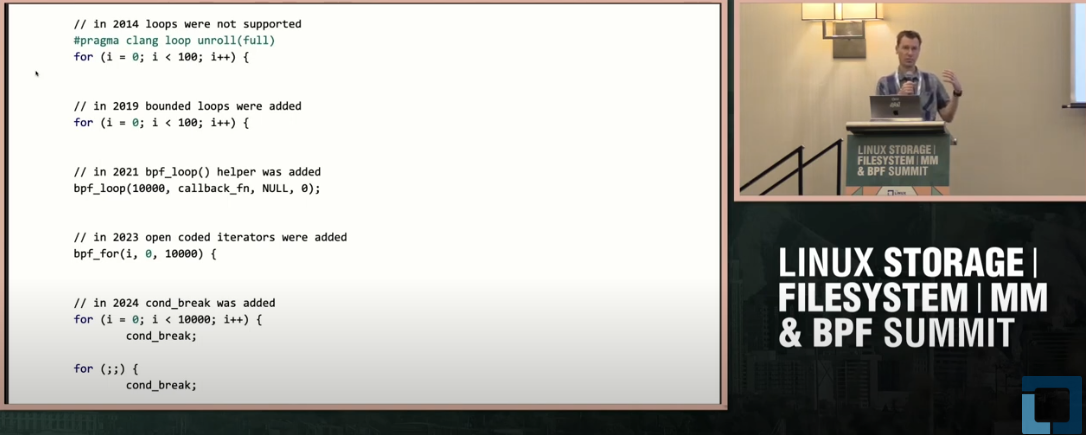In a recent session at the Linux Storage, Filesystems, MM, and BPF Summit, Alexei Starovoitov of Meta, and a member of the eBPF Steering Committee, shared his vision for the future of BPF. As BPF celebrates its ten-year anniversary, Alexei’s insights highlighted the progress made and the roadmap for the next decade. Here’s a summary of the key points from his enlightening presentation.
1. Reflecting on a Decade of BPF: From Networking to Versatile Engine
BPF started as a programmable networking tool designed to process packets efficiently. Over the past decade, it has evolved into a powerful engine used for tracing, observability, and beyond. Key milestones include:
- The introduction of BPF system calls in 2014.
- The development of tools like BCC (BPF Compiler Collection) and BPFTrace, which have expanded BPF’s applicability to various use cases.
2. Innovations Addressing Current Challenges
The journey of BPF has not been without its challenges. Security concerns, compiler constraints, and the need for efficient data structures have driven several innovations:
- Bounded Loops: Introduced to enhance programmability and ensure programs do not run indefinitely.
- U-Arena Concept: A new approach to managing complex algorithms and data structures within BPF programs, aiming to improve performance and safety.
3. Future Directions: Expanding Capabilities and Improving Usability
Looking ahead, the focus is on making BPF even more versatile and user-friendly. Key goals for the next decade include:
- Lock Analysis and Deadlock Detection: Improving the tools and methods for detecting and resolving deadlocks within BPF programs.
- User Space Integration: Exploring the potential of BPF for user space applications, enhancing observability and safety beyond the kernel.
- Instruction Limits and Modularization: Addressing the current limitations on instruction counts and making BPF more modular to facilitate easier updates and maintenance.
4. Community and Documentation: Bridging the Gap
The BPF community has grown substantially, but with growth comes the need for better documentation and user support. There is an ongoing discussion about:
- Improving Documentation: While some praise the existing resources, there is a recognized need for consolidation and enhancement to support both newcomers and experienced users.
- Expanding Community Engagement: Encouraging more contributions and discussions to continuously improve BPF’s ecosystem.
5. Harnessing BPF’s Full Potential: Integration and New Use Cases
BPF’s versatility opens up numerous possibilities for the future:
- New Instruction Sets: Exploring and introducing new instructions to keep BPF at the cutting edge of technology.
- Embedded Applications: Leveraging BPF’s observability and safety features in user space applications to solve complex problems that were traditionally handled within the kernel.

